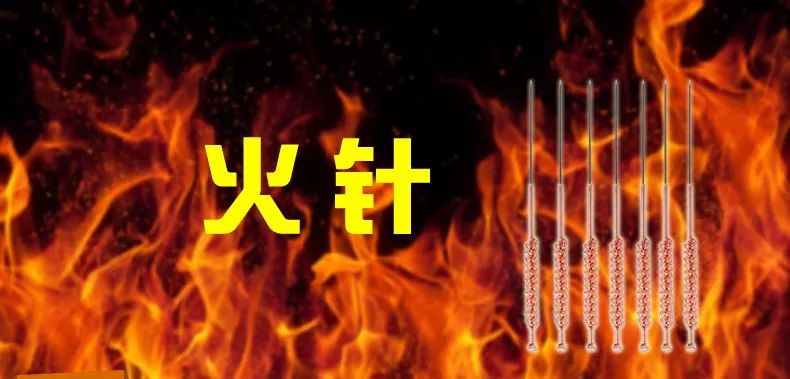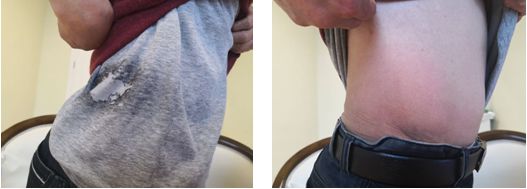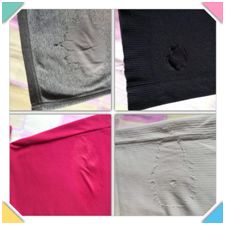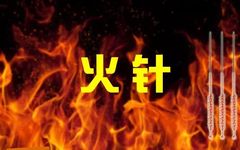
Traditional Chinese Medicine (TCM) encompasses five main therapeutic methods: acupuncture, moxibustion, cupping, herbal medicine, and tui na (massage). These methods are the result of valuable medical experiences accumulated by Chinese medicine practitioners over a long history of combating diseases. Fire needle therapy, as one of the distinctive therapies in TCM, has a long-standing history and has gained increasing attention and popularity in recent years. In the treatment of many diseases, fire needle therapy has proven to be remarkably effective.

“Fire Needle” has a long history

Practitioners engaged in TCM clinical work for many years are often fascinated by herbal formulas. Initially, they may regard fire needle therapy as merely a special technique of acupuncture, considering it to be a trivial skill or a form of mystique. However, this is far from the truth.
Fire needle therapy has a rich history, originating in the pre-Qin period. It underwent continuous organization and systematization during the Tang and Song dynasties, and saw significant development from the Jin and Yuan to the Ming and Qing dynasties. It is revered in TCM, as noted in the classic text Huangdi Neijing: Suwen (The Yellow Emperor’s Classic of Medicine), which states: “If the disease is in the tendons, treat the tendons; if the disease is in the bones, treat the bones; fire needle can be used to stimulate.” The esteemed physician Zhang Zhongjing also mentioned the use of “burning needles to induce sweating” in his work Shanghan Zabing Lun (Treatise on Cold Damage and Miscellaneous Diseases). The term fire needle was formally named in the Tang dynasty by Sun Simiao in his work Qianjin Yaofang (Essential Prescriptions Worth a Thousand Gold), and it entered a new peak period in modern times.
The “Hidden Gem” of Fire Needle Therapy

Fire needle therapy involves using specially designed needles that are heated in fire and then quickly inserted into specific acupuncture points or areas of the body to achieve therapeutic effects. This method is characterized by ease of operation, low cost, rapid effectiveness, good therapeutic results, broad applicability, and high safety.
Decades of Pain: The Miraculous Effects of Fire Needle Therapy
Patient Mr. Zhang, male, 63 years old, has suffered from postherpetic neuralgia for several years, with no improvement despite seeking various treatments. He learned about the unique skills of TCM practitioner Liu Baoshan and came for consultation.

Initial Consultation Date: December 2, 2018
Chief Complaint: Postherpetic neuralgia for 15 years
Present Illness History: 15 years ago, he had herpes zoster, leaving discomfort in the right hypochondrium, hip, and lower back.
Patient’s Description: The skin in the affected area feels like insects crawling, and at times, like ants biting, causing him constant distress. Only continuous rubbing provides slight relief. Initially, he visited various hospitals but found no cure.
Current Symptoms: The patient appears indifferent, with redness in the affected skin (due to rubbing), feeling anxious and restless, with poor sleep. He experiences dry mouth with little desire to drink, cold extremities, abdominal coldness, occasional bloating and belching, and daily bowel movements. His tongue is red with a white coating, and his pulse is wiry and thin. Upon examination, his undergarments were found damaged, and when asked, he explained it was due to rubbing. Over the years, he has damaged countless undergarments, indicating his suffering, and thus fire needle therapy was administered.

Follow-up Consultation on December 8, 2018
When the patient entered the consultation room, his previously gloomy expression had changed to one of joy. Before Dr. Liu could ask, he eagerly recounted: After fire needle treatment, the discomfort in the affected area significantly decreased that night, and he no longer needed to rub it. He praised the miraculous effects of fire needle therapy. Upon examination, the redness in the affected skin had subsided, confirming that he no longer needed to rub the area. He requested Dr. Liu to help him regulate his constitution to consolidate the treatment effects.
Fire needle local treatment, combined with 14 doses of herbal decoction for further observation.

Follow-up Consultation on December 31, 2018
Patient’s Description:
The discomfort in the affected area has disappeared, and he joyfully recounted his 15-year battle with the illness and the suffering he endured. He expressed many sentiments and showed the previously damaged clothing, speaking excitedly and happily, and inquired whether fire needle therapy could further help regulate his spleen and stomach deficiency and cold…

Postherpetic Neuralgia
Postherpetic neuralgia often manifests as a band around the waist, hence it is commonly referred to in TCM as “she chuan chuan” (snake string sore) or “chuan yao long” (waist dragon) . Postherpetic neuralgia occurs when pathogenic factors lie dormant in the body. When the body’s righteous qi is weak (insufficient liver qi), the latent pathogens take the opportunity to cause disturbances, affecting the liver and gallbladder meridians, which can manifest in the hypochondriac region, as well as in the eyes and ears. These pathogenic factors are a mixture of cold, heat, phlegm, dampness, and blood stasis, rather than a single type, leading to skin rashes, burning, and pain in the affected areas.
Fire needle therapy utilizes heat to warm and tonify local yang qi, promoting the smooth flow of meridians, or combined with cupping to quickly expel pathogenic factors, ensuring the meridians are unblocked and the righteous qi is restored.
Most TCM practitioners believe the cause of the disease is damp-heat in the liver and gallbladder, and treatment methods often focus on clearing and benefiting the liver and gallbladder. However, clinical results using this method have often been unsatisfactory, indicating that the etiology and pathogenesis need to be corrected. Due to the prevalence of refrigerators, air conditioning, and changes in lifestyle, the current population’s constitution is such that eight or nine out of ten are yang deficient, and it is rare to find one with yin deficiency. Pure damp-heat excess is now rarely seen, and if we continue to use only the treatment methods of the past, it would be akin to searching for a horse by following a map. If the patient is elderly or has a pre-existing deficiency of spleen and stomach, such treatment will only harm the spleen and stomach, leading to endless consequences.


Liu Baoshan, Chief Physician of Internal Medicine in TCM. He works at the TCM Department of Beijing Friendship Hospital, affiliated with Capital Medical University. He is a member of the Health Preservation and Rehabilitation Professional Committee of the Beijing Association of Traditional Chinese Medicine; a member of the Rheumatology Professional Committee of the Beijing Association of Traditional Chinese Medicine; a member of the General Practice Professional Committee of the Beijing Association of Integrative Medicine; and a member of the Acupuncture and Knife Medicine Branch of the Chinese Association of Traditional Chinese Medicine. He is also a member of the TCM Quality Control Group in Tongzhou District, Beijing.
He studied under the renowned TCM master Feng Shilun, a contemporary expert in classical formulas. He has been deeply inspired and influenced by Professor Feng’s academic thoughts on the “six channels, eight principles, and formula-syndrome” and is skilled in the combined application of classical and contemporary formulas to treat common and frequently occurring diseases. In the field of acupuncture and knife therapy, he studied under Professor Xiao Dehua, the Secretary-General of the Acupuncture and Knife Society of the Chinese Association of Traditional Chinese Medicine, and is adept at integrating acupuncture and knife therapy with classical formulas, creating a new model of combined acupuncture and herbal treatment for internal diseases.

Expertise:
Skin Diseases:Postherpetic neuralgia, acne, urticaria, eczema.
Common Internal Diseases:Fever, cough, insomnia, chronic rhinitis, chronic gastritis, diarrhea, palpitations, headache, dizziness, menopausal syndrome, bi syndrome, oral ulcers, etc.
Gynecological and Pediatric Conditions:Pediatric pneumonia, asthma, adenoid hypertrophy, anorexia, indigestion, night crying, enuresis, etc.; dysmenorrhea, irregular menstruation, infertility, etc.
Acupuncture and Knife Therapy Expertise:Cervical spondylosis, lumbar disc herniation, lumbar muscle strain, etc.
Consultation Hours:
Every Sunday all day
Appointment Phone:
400-1000-160



